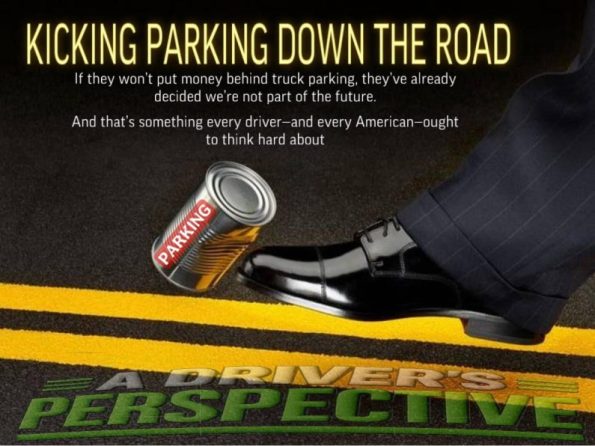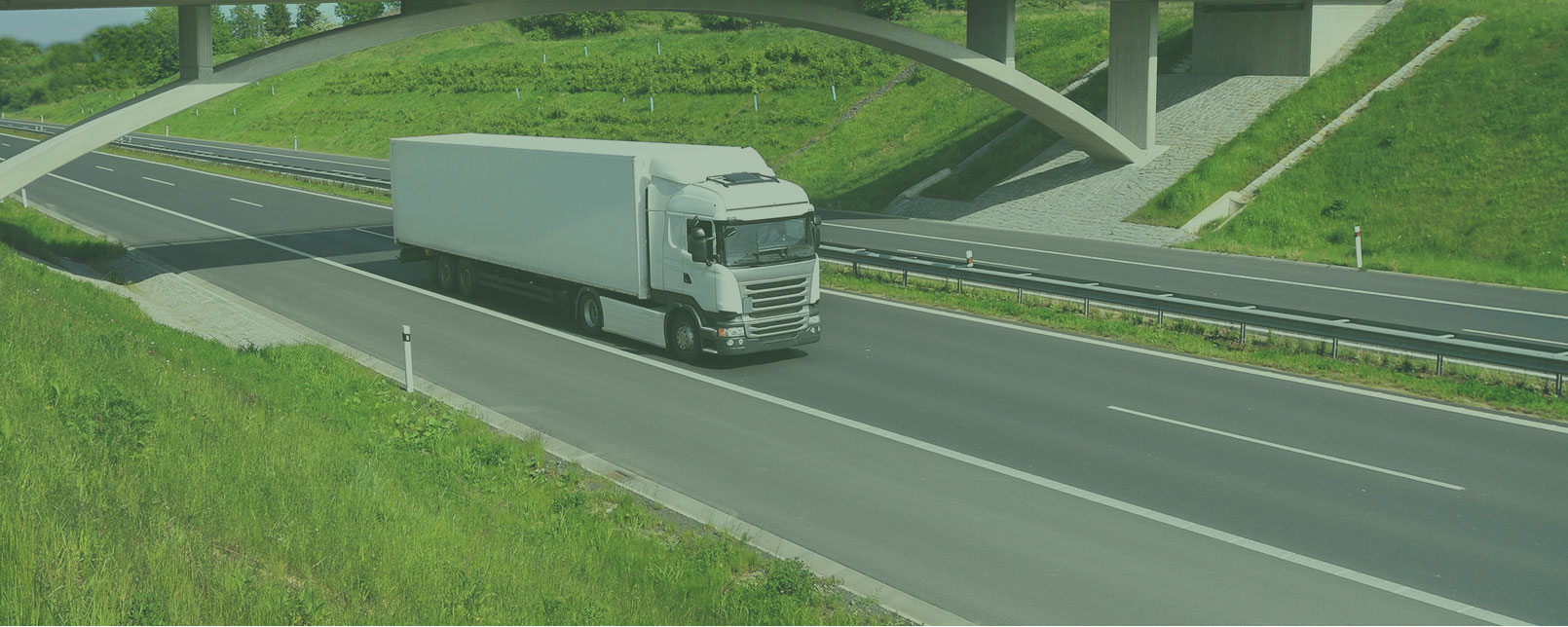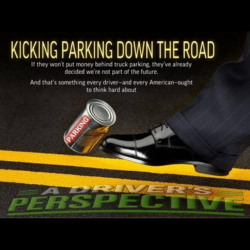
KICKING THE CAN DOWN THE ROAD
Truck Parking
As I reflect on the months since Donald Trump returned to the White House on January 20, 2025, and appointed Sean P. Duffy as Secretary of Transportation, one question keeps hitting me like a Jake brake in rush hour: What’s actually changed for the men and women who move this nation?
Let’s look at the facts. Regulation by regulation. Promise by promise. And what still hasn’t been delivered.
1. Deregulation Across the DOT
Secretary Duffy has come in hard with a broad deregulation campaign:
• 52 rules scrapped across FMCSA, FHWA, and NHTSA—eliminating over 73,000 words from the Federal Register.
• Old mandates tossed: paper manuals for ELDs, spare fuses, outdated reflectivity tape, and other red-tape nonsense that should’ve been gone years ago.
• Military-trained drivers are now exempt from civilian CDL requirements—finally some common sense when it comes to qualified personnel.
The paperwork has been shredded. But for drivers still on the road? Not much else has changed.
2. Reversing “Woke” Initiatives
On April 24, DOT issued a memo to kill off DEI, climate justice, and “equity”-based criteria in federal transportation grants. The message was clear: Focus on roads, not ideology.
Bridge and highway funding no longer requires equity statements or climate projections. Infrastructure, they say, will be built based on need—not narrative.
But if that’s true, why is the number one need in trucking—parking—still nowhere on the agenda?
3. Reviewing Biden-Era Grants
Duffy’s DOT paused and reviewed over 3,200 IIJA-era grants. Out of those, 1,000 have since been cleared, accounting for roughly $10 billion in re-approved funding. Sounds productive. But again—nothing yet focused on the daily challenges of the American truck driver.
4. Trucking-Specific Driver Issues
FMCSA reinstated English proficiency rules: drivers must now be able to read and speak English to operate in the U.S. A move long overdue, especially for safety and communication at scale.
Enforcement has also shifted. There’s been a pullback from excessive inspections, aggressive roadside tactics, and arbitrary shutdowns. That’s a win. But easing up on enforcement can’t substitute for meaningful support. Drivers are still operating without the one thing we need most: secure places to rest.
5. Driverless Trucks: The Real Priority
If you want to know where the government’s focus really is—look no further than automated vehicles.
• In June, NHTSA rolled out a new federal framework to fast-track driverless trucks.
• The Part 555 exemption program now allows 2,500 non-traditional AVs per manufacturer—annually—with shortened approval timelines.
The writing’s on the wall. The powers that be are clearing the way for robots while ignoring the men and women behind the wheel today.
6. Infrastructure and Spending Moves
DOT opened up $5.4 billion in bridge funding this summer—no DEI or climate strings attached. They also shifted Penn Station funding away from New York’s MTA to federal control, supposedly saving $120 million. Even congestion pricing in NYC was pulled back.
But let’s be clear—this isn’t about helping truckers. These are political and urban infrastructure wins. Meanwhile, truckers can’t even find a place to park at night.
Lack of Parking…
Lack of parking can cause a driver to lose up to 10 hours of driving in a five-day period—easily, if not more. And 10 hours of driving is equivalent to a full day’s wage. For a company driver, that’s $200 to $350. In a month? That’s over $1,000 gone. For an owner-operator or lease driver, that lost time can mean $1,000 to $1,500 a day—translating into $4,000 to $6,000 a month out the window.
And it’s not just money. It’s stress. It’s the toll of living on the road. It’s trying to plan your day around parking when you don’t even know how long you’ll be stuck waiting at a shipper or receiver.
Trucking jobs aren’t cookie-cutter. Every load is different. Every hour you’re delayed changes where you’ll end up—and what kind of traffic or parking crunch you’ll hit. Most drivers don’t know their schedule beyond 48 to 72 hours out. And once that 3 to 6 p.m. window hits, truck stops start filling up like clockwork. Miss it, and good luck finding legal parking that isn’t a ticket or a tow away.
This isn’t just a nuisance. It’s a crisis. It’s impacting traffic patterns, safety, health, lives—and the national economy. And yet truck parking keeps getting kicked down the road like an empty soda can.
So here’s the question: When will our elected officials quit making excuses and tell us the truth—either about what’s being done, or what they don’t intend to do?
The Truck Parking Question
Back in February or March, Duffy admitted in a congressional hearing that the parking shortage is real. He even said funding would be addressed in the upcoming surface transportation reauthorization.
But here we are—months later—with:
• No proposals on the table.
• No draft language.
• No earmarked funds.
• No established parking programs at DOT.
There’s talk, but no blueprint. No dirt turned. No signposts saying, “New Parking Coming Soon.” It’s all promise—no pavement.
What to Watch
• The 2025 reauthorization process is the next major chance for this to change.
• DOT may form a truck parking working group—but there’s been no announcement, no meeting calendar, no advisory board appointments.
• And with AV technology climbing the ladder of federal priority, it’s hard not to assume they’re simply counting on fewer drivers needing parking in the future.
Final Analysis: Truckers in the Balance
Area Status: What It Means for Drivers
Deregulation Aggressive and wide-reaching Easier compliance, but doesn’t solve big issues
Enforcement Less aggressive, English rule Safer communication, fewer shutdowns
AV Technology Full speed ahead Future-focused, sidelining today’s workforce
Truck Parking No action—just promises Lost time, lost money, growing safety crisis
Conclusion
From where I sit, it’s simple: the administration is putting resources into regulation cuts and autonomous trucks—but not into the people actually moving America right now.
They’re planning for a future without truckers, instead of fixing the crisis truckers face today. No matter what side of the political aisle you’re on, that ought to be a red flag.
Parking isn’t a luxury—it’s a necessity. And when it’s not prioritized like terminals, airports, or rail hubs, it tells you everything about where drivers rank in the federal agenda.
Our wheels keep this country running. But without a place to stop, rest, and reset—we’re being pushed out. Quietly. Strategically. Systematically.
If they won’t put money behind truck parking, they’ve already decided we’re not part of the future.
And that’s something every driver—and every American—ought to think hard about.
Will Cook | A Driver’s Perspective

